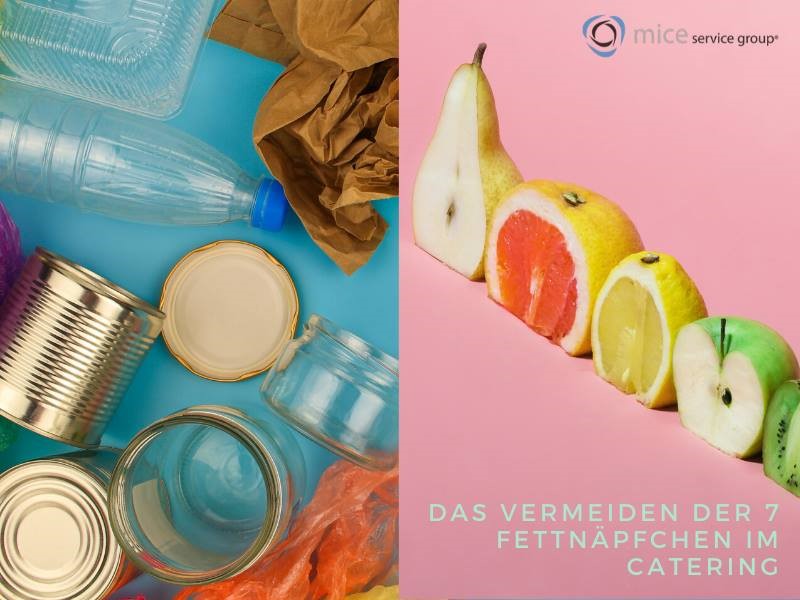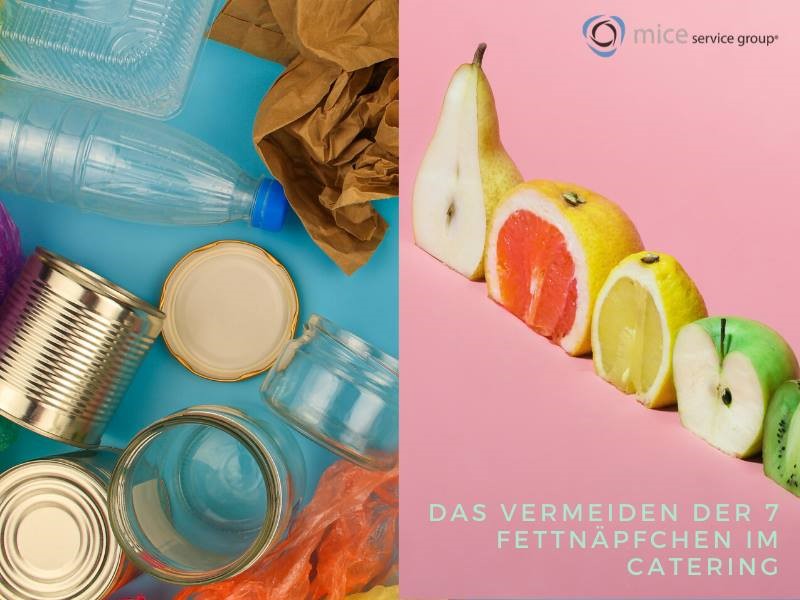Here are our 7 tips for greener catering:
1. Avoid plastic waste
It’s clear to see and everyone’s talking about it, but we still haven’t managed to get rid of this environmental killer. Only 30% of plastic waste is recycled; 31% is sent to the rubbish tips, and 39% is burned in Europe2. So it’s high time we dispensed with it or started using recycled products. For your catering therefore, be sure to avoid disposable crockery and cups. Paper plates and even cardboard plates made from leaves are available as alternatives. But there’s also another factor to bear in mind: Catering food is often wrapped in cling film to keep contents fresh. Opt instead for wax wraps, which your participants can recycle after use.
2. Buy local produce
Where possible, try to buy products such as fruit and vegetables which are grown regionally. This supports local farmers and also minimises the CO2 emissions associated with transportation. Also try to buy in bulk whenever you can, to avoid having to make unnecessary extra trips.
3. A future-focused catering service
The cost factor is of course important when catering for an event. The food needs to taste good without costing too much, but unfortunately these two aspects don’t always go hand in hand.
There are, however, many caterers who have embraced the notion of slow food, and who are not necessarily more expensive. This will ensure your food tantalises taste buds in a very unique way.
4. Use glass bottles
You can’t have a meeting without drinks. But make sure water is only ever served in glass bottles. This looks nicer and is also better for the environment. Glass can always be melted down, meaning nothing is lost in the environment and no resources are wasted.3
5. Save water
Glass glasses are often available to drink out of. Don’t unnecessarily waste water, and make sure your participants reuse their glasses.
6. Involve the participants
It’s also important to involve your participants in your project. The more you inform your participants, the more willing they will be to join in. Be sure to highlight signs and show how important it is for everyone to get involved. It’s also important to present your results at the end of your meeting and make the value measurable.
7. Corporate social responsibility
Environmentally friendly events are a way for you to help your company with its corporate social responsibility. Many companies have a responsibility to society in the way they harm the environment with their business activities. An environmentally friendly meeting concept is a way for your company to make up for this and follow a greener path.


 austria
austria
 switzerland
switzerland

